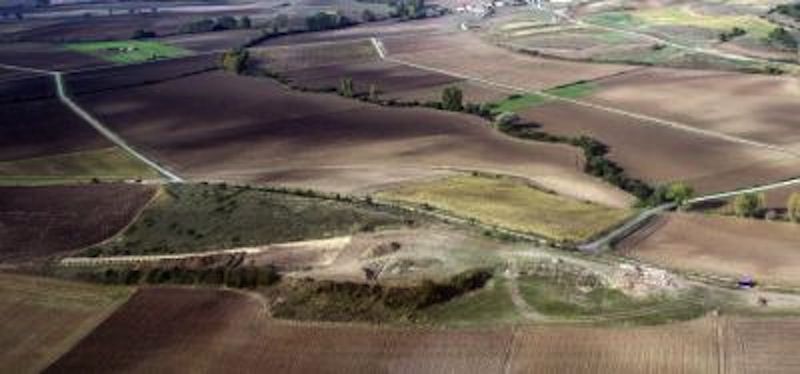Vintage Find: 1,000-Year-Old Vineyards Discovered in Spain

Traces of ancient vineyards that date back 1,000 years were discovered in the terraced fields of a medieval village in Spain, according to a new archaeological study.
Researchers from the University of the Basque Country found evidence that fields within the medieval settlement of Zaballa were once intensely used to grow grape vines.
"Archaeo-botanical studies of seed remains found in the excavations and pollen studies have provided material evidence of the existence of vine cultivation in a relatively early period like the 10th century," study author Juan Antonio Quirós-Castillo said in a statement. [In Photos: Archaeology Around the World]
The researchers' examination of the fields, which are still visible in the landscape, suggests they were more agriculturally suited to growing vines, rather than cereal crops, he added. The archaeologists also unearthed metal tools that were likely used to maintain the ancient vineyards.
The village of Zaballa was abandoned in the 15th century, largely after local lords operating under a newly created rent-seeking system drove out many of the town's settlers. Zaballa is one of more than 300 deserted settlements collectively known as Araba-Alava. Today, archaeologists from the University of the Basque Country are trying to reconstruct the region's rural heritage by combing the remains of these deserted settlements.
"The important thing is not just their number, but that in the decade that we have been working on this project, extensive work has been done on nearly half a dozen of them, and work at other levels has been done on nearly a hundred," Quirós-Castillo said.
As such, the researchers are compiling some of the most important archaeological records of medieval history throughout northern Spain, he said. "In other words, to see how the peasant community itself gradually adapts to the political and economic changes that take place in the medieval context in which these places are located," he added.
Sign up for the Live Science daily newsletter now
Get the world’s most fascinating discoveries delivered straight to your inbox.
Quirós-Castillo and his colleagues also studied another abandoned settlement in Araba-Alava called Zornotegi. They discovered that the terraced fields in this village were devoted to cultivating cereals and grains.
"Zornotegi has a completely different history," Quirós-Castillo said. "Even though it was founded at more or less the same time, it is a much more egalitarian social community in which such significant social differences are not observed, and nor is the action of manorial powers which, in some way, undermined the balance of the community."
The researchers are pushing for the Araba-Alava settlements to be regarded as part of archaeological heritage, in order to preserve their rich history.
"The space for traditional crops, still easily recognizable in the landscapes closest to us, are historical spaces brimming with explanatory significance to help us understand the societies of the past; indeed, they require attention which they have not had until now," Quirós-Castillo said.
The discoveries were reported in a special issue of the journal Quaternary International.
Follow Denise Chow on Twitter @denisechow. Follow LiveScience @livescience, Facebook & Google+. Original article on LiveScience.

Denise Chow was the assistant managing editor at Live Science before moving to NBC News as a science reporter, where she focuses on general science and climate change. Before joining the Live Science team in 2013, she spent two years as a staff writer for Space.com, writing about rocket launches and covering NASA's final three space shuttle missions. A Canadian transplant, Denise has a bachelor's degree from the University of Toronto, and a master's degree in journalism from New York University.










